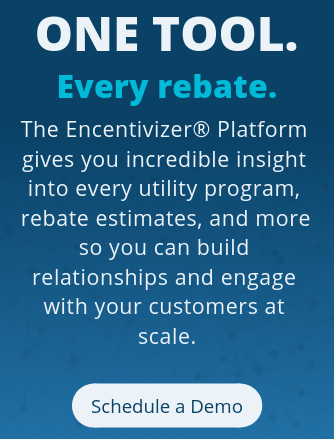
The last piece of the DesignLights Consortium’s® (DLC®) V4.4 SSL standard, Field-Adjustable Light Distribution was finalized and released on March 7, 2019.
The policy is somewhat of a companion piece to the Field-Adjustable Light Output that was put into effect October 2018. It addresses the continuing evolution in LED product development by attempting to accommodate the flexibility that LED allows for fixtures.
Principally, the policy is addressing products where:
“Field-adjustable light distribution products are products where the distribution of light can be adjusted in the field.”1,2
The primary motivation for developing and releasing this policy is:
“This capability allows manufacturers and distributors to capture greater economies of scale and stock fewer SKUs, reducing manufacturing and distribution costs while providing installers and customers greater flexibility.”1,2
The same motivation was used for the introduction of the Field-Adjustable Light Output policy.
Measurement of light distribution is a very material part of the DLC qualification process. Utility rebate programs, and therefore the DLC, really HATE “wasted” light. Why should they rebate a fixture that lights areas that don’t have to do with its primary purpose? I mean, this is TASK lighting right? We remember the full/semi- cutoff wall-pack battle, right? 😉
So if your aluminum, prismatic, or other reflector wastes light or reduces the lumens that are being cast into the appropriate zone and affects your zonal efficacy (using my creative license there), then your rebate should be affected - from a utility perspective.
So that brings us to this new light distribution policy.
The DLC has defined two types of Field-Adjustable Light Distribution products (I’m switching to ‘FALD’):
Integral FALD Products: products where the distribution can be altered by means integral to the product, electrical or mechanical.
Standard Component FALD Products: products where the distribution is altered by adding or removing parts that are included with every product order under a single model number.
And you can have combinations of the two, but you CANNOT qualify situations where:
“Products where the distribution is altered by adding or removing optional parts not included with every product order.”1,2
Basically, pick one and make sure all the parts are in the box every time.
Testing and qualification portions of the policy are outside the scope of this article, but whenever I see phrases like “at one manufacturer-designated setting” and “is not required to meet the ZLD requirements at other light distribution setting”, I get a warm fuzzy feeling!
That brings us to rebates.
Unfortunately FALD suffers the same fate as the Field-Adjustable Light Output (FALO) policy, but with its own twists:
“FALD products will be listed on the QPL at the light distribution setting that produces the worst-case efficacy, with the following product performance characteristics from that LM-79 testing at that setting: light output, watts, efficacy, THD, power factor, CRI, CCT.”1,2
The rebate implications are somewhat similar to the analysis we did for FALO, but are probably less severe. FALO is about adjusting wattage as well as lumens, and rebate programs are very sensitive to wattage treatment so the impact is high.
For FALD, we believe it will be less impactful, but can still be material.
The primary impact is in those utility programs that use efficacy or lumens either in their program directly as part of the calculation, as a way to “bucket” rebate levels, or for a qualifying minimum.
Direct Calculation
- Southern California Edison, PG&E and SDG&E use Kilolumens to calculate the actual rebate value, so a “worst case” lumens would impact the rebate for non-worst case scenarios. They also use a high and low lumens filter that could eliminate non-worst case fixtures.
- Some Iowa co-ops use some crazy lumens-based calculation method that would be affected as well
Qualifying minimum lumens & efficacy
- There are a number of Midwest co-ops that use a minimum lumens value to qualify for a rebate for many categories. They are usually paired with a wattage segmentation as well
- Some program describe a minimum efficacy, which may differ from the DLC’s minimum. The Los Angeles Department of Water & Power has been notorious for setting is own minimum efficacy, CRI, and its own THD cutoff.
“Bucketed” segments
- Many utilities use lumens buckets as the sole manner to determine rebate value for parts or all of their programs, some downstream, some mid/upstream:
- MidAmerican, MassSave, Delmarva Power, Potomac Edison, SMECO, Efficiency Maine, Efficiency Smart, Delaware’s state program, SWEPCO Arkansas, Prince Edward Island, Pepco, Entergy Arkansas, Focus on Energy, CPS Energy, Efficiency Alberta, Efficiency Nova Scotia, Efficiency Vermont, Georgia Power, DCSEU, BGE, National Grid, NY, PSEG/Long Island, PECO, PPL
- Some smaller co-ops and program combine lumen buckets with wattage buckets
In all cases, “worst case” efficacy can distort the rebate for a fixture in its configuration that is better than “worst case”. If your “Kilolumens” is higher than “worst case”, or “worst case” puts you in a lower rebate tier than your fixture configuration would normally be, then your rebate value will suffer.
As of writing this, no products have been qualified by the DLC that have the Field-Adjustable Light Distribution indicator set, so it will be interesting to see which products will get the FALD designation, and what the real-world impact will be.
No known remedy for this distortion currently exists, but we have some ideas, feel free to reach out and discuss.
SOURCES:
.png?width=500&name=2019%20e%20news%20spotlight%20logo%20(1).png)




